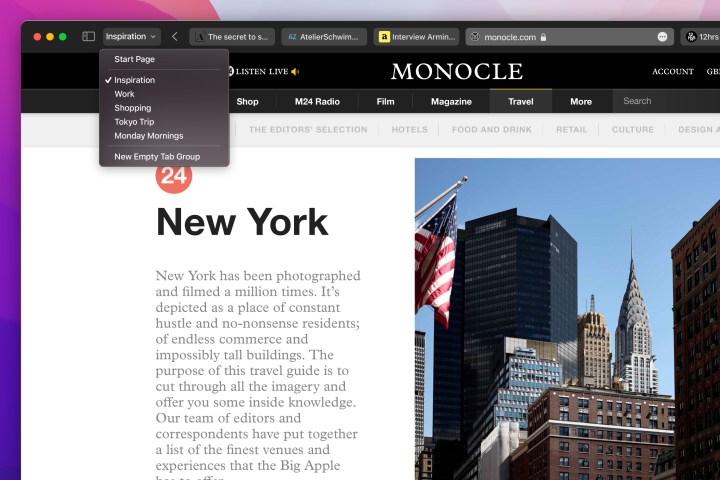I have a web browser confession to make: I’m an inveterate tab hoarder. I’ve tried to change. I’ve tried to cull open tabs and tried to resist opening new ones — but somehow the open tab counter just keeps on rising. At this point, I think I’m beyond saving.
What I’ve learned is that I need a web browser that can accommodate me, that has learned to accept my tab-based failings without judgement or chastisement. And after many years of trying, it turns out that Safari is not that browser.
The tab problem

Safari treats tabs in the same way that Google Chrome does (and the same goes for all Chromium-based browsers like Edge, in fact). That is, the more tabs you open, the smaller each individual tab gets. If, like me, you have dozens or even hundreds of tabs open at a time, each one is shrunk down to the size of a pinhead in the tab bar.
Needless to say, this is pretty anxiety-inducing, as it’s a pain to find whichever tab it is that I’m looking for. Sure, I could always, you know, clear out my tabs, but who knows when I might need that article on the perfect way to iron my shirts? It could be right now. Bookmarking it and forgetting about it simply isn’t an option.
Instead of being more measured with my tab usage like a proper adult, I’ve taken the easy way out and switched to a better browser alternative: Firefox. Unlike Safari, when Firefox reaches a certain tab threshold, it lets you scroll the tab bar. Tabs stay a reasonable size and never shrink down to an unmanageable dimension. It’s enabling my bad habits, and I love it.
Sharing is caring

I’ve actually used Firefox for over 15 years now, and I’ve previously written about why I love it so much. But while it was always my go-to Windows browser, Safari still clung on while I was using my Mac. Recently, I finally pulled the plug and switched over to Firefox on my Mac, and I couldn’t be happier.
As I’m someone who regularly uses both Windows and macOS, I find myself frequently sending content from one device to another. Apple’s ecosystem is great for that (hello, AirDrop), but going from Windows to macOS and back again isn’t so straightforward.
That is manifestly the case when it comes to sending myself web content. Apple pulled Safari from Windows years ago, so if I’m reading a webpage on Safari on my Mac, I have to email it to myself if I want to read it on my PC. It feels like it’s 2005 all over again.
If I use Firefox on my Mac, though, I can simply use its Send Tab to Device feature to ping the website across to Firefox running on my PC. It takes just a second and doesn’t clog up my email inbox. The irony is that Firefox is essentially setting up the kind of walled-garden ecosystem that Apple has long perfected.
Playing catchup

Despite what I’ve said so far, it wasn’t just Safari’s tab management that forced my hand, although that played a big part in it. For one thing, both Safari and Firefox are some of the best browsers for privacy and have a plethora of privacy-protecting features built in. In that regard, switching to Firefox on my Mac didn’t feel like a step back at all.
But there’s something else, and it comes down to a more fundamental problem I have with Safari: it constantly feels like it’s playing catchup. We had to wait years before it got multiple browsing profiles, something rivals have long since baked in as standard in their own browsers.
Even worse, we had to wait until November 2023 to get favicons in the favorites bar. That’s right, websites saved to the toolbar have only just gained this key visual cue, literally years after every other browser implemented the feature.
In the end, it was a combination of all these factors that led me to give up Safari on my Mac. I used it for years because, as the default macOS web browser, it was easy. But sometimes you’ve got to go beyond the default to find something better.
Editors’ Recommendations




)


